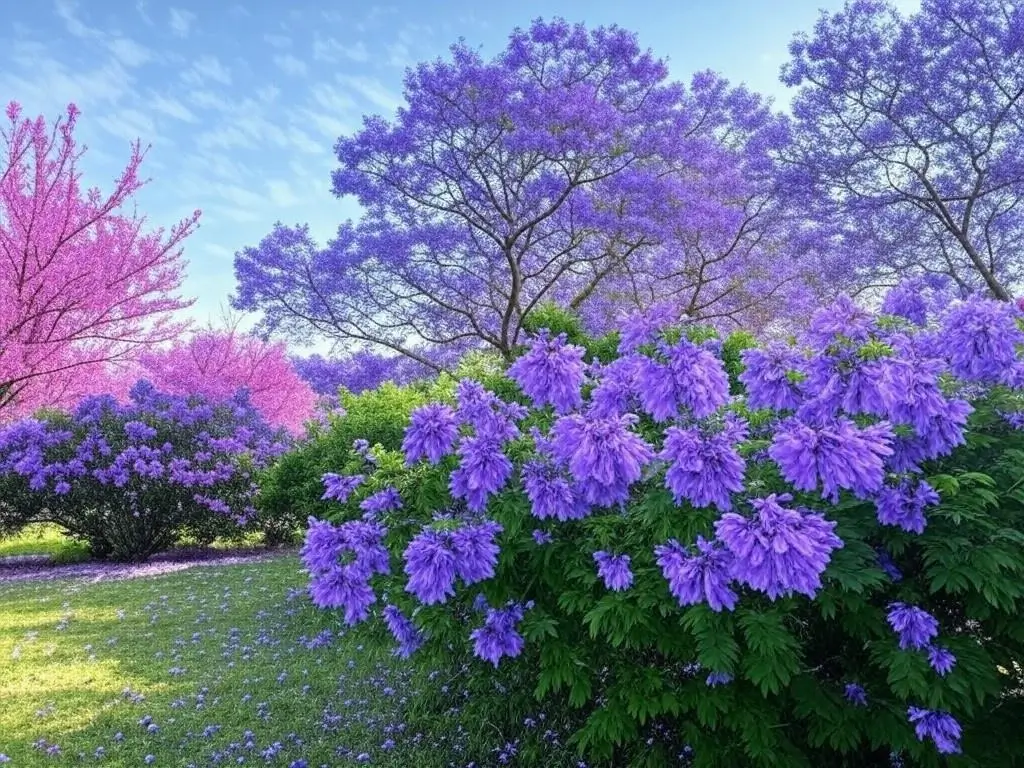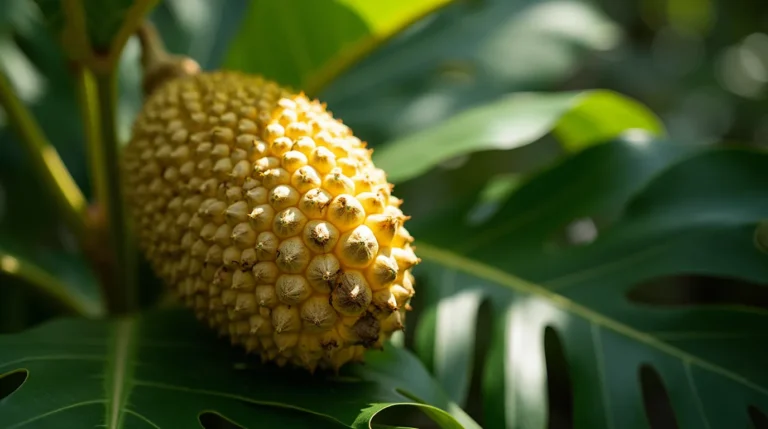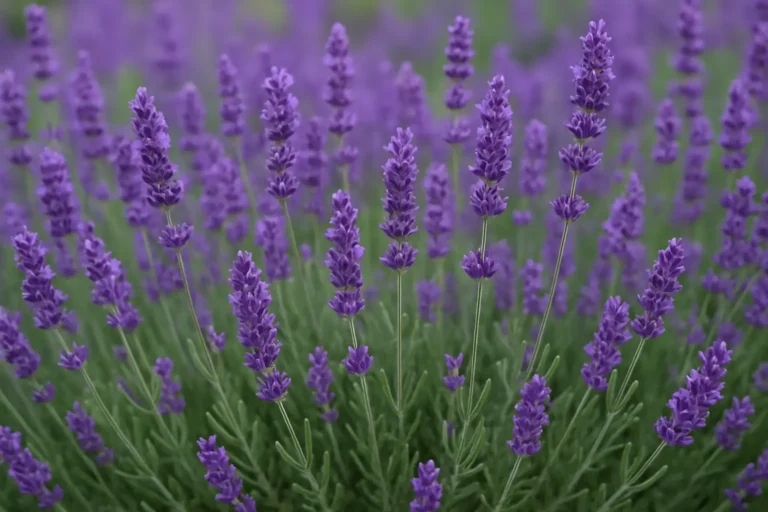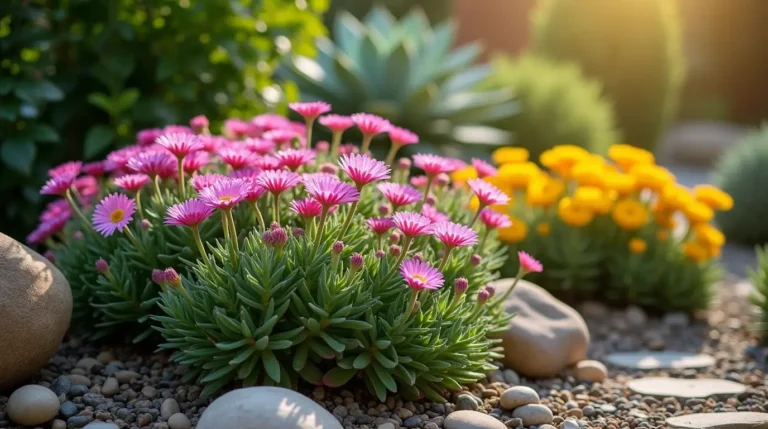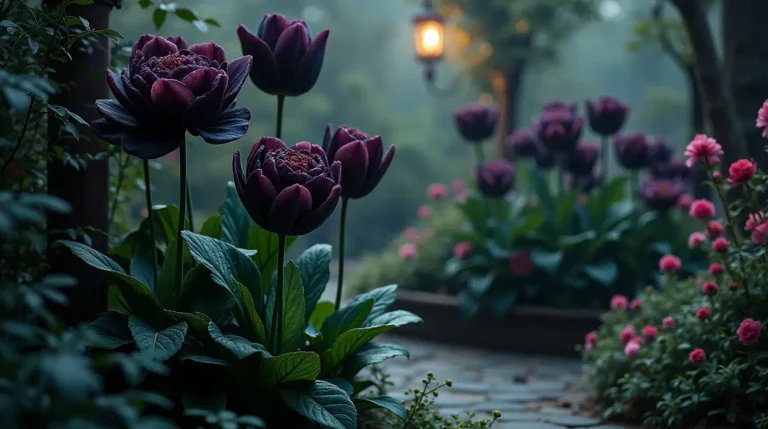4 Stunning Purple-Blooming Trees and How to Grow Them
Introduction
Purple-blooming trees captivate gardeners and nature enthusiasts alike with their enchanting hues and striking presence. These trees not only add a touch of elegance but also play a pivotal role in enhancing the overall aesthetics of any outdoor space. Whether you’re looking to create a serene retreat or a vibrant focal point in your garden, purple-blooming trees offer unmatched beauty. This guide will take you through the benefits of these trees, the best varieties to consider, essential care tips, landscaping ideas, and solutions to common challenges.
Why Choose Purple-Blooming Trees for Your Garden?
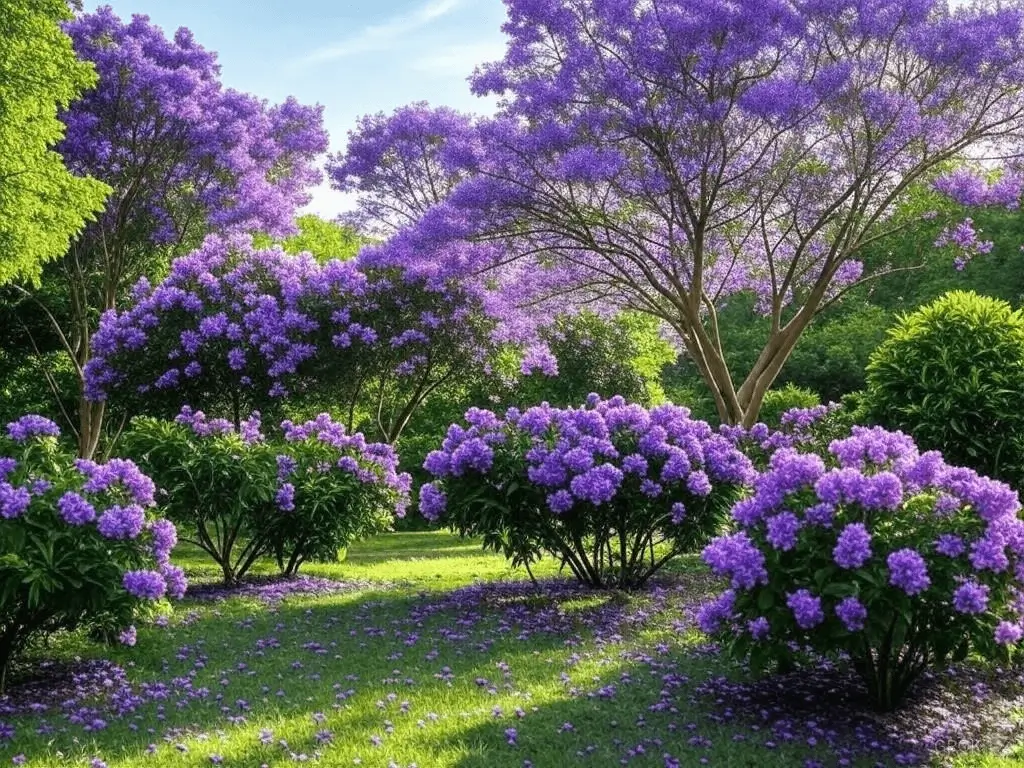
Aesthetic Appeal
The unique color palette of purple flowers ranges from soft lavender to deep violet, creating a visually stunning garden. Purple hues symbolize calmness and creativity, making these trees ideal for crafting a tranquil outdoor atmosphere. When in bloom, they can transform a garden into an oasis of color and serenity, drawing attention and admiration from visitors and passersby.
Seasonal Blooms
Purple-blooming trees offer seasonal spectacles, with many varieties showcasing their vibrant flowers in spring and summer. These trees ensure a dynamic landscape, transitioning your garden through bursts of color during peak blooming periods. Knowing when specific trees bloom allows you to design a garden with continuous seasonal interest.
Diversity of Options
Purple-blooming trees come in various sizes, shapes, and growth habits, making them suitable for all garden styles. Whether you’re working with a compact urban yard or a sprawling landscape, there’s a tree to match your vision. From towering jacarandas to compact crape myrtles, the diversity ensures you’ll find a perfect fit for your needs.
Top Purple-Blooming Tree Varieties to Consider
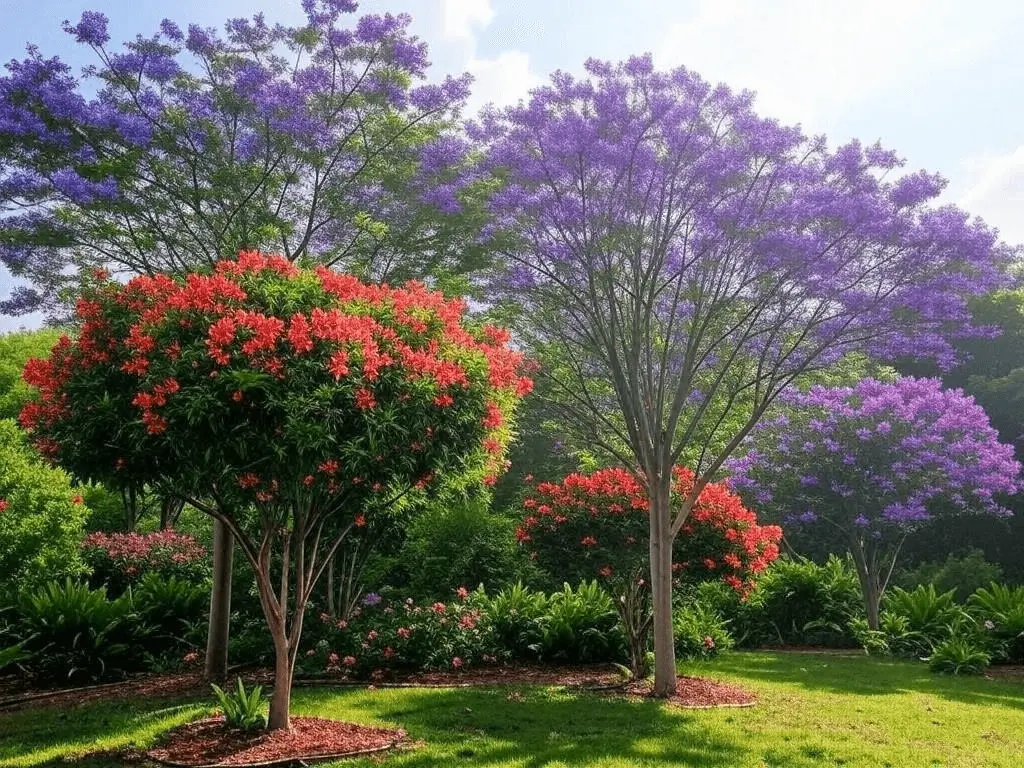
Jacaranda Tree
Known for its breathtaking clusters of purple flowers, the jacaranda tree is a showstopper. This tree thrives in USDA zones 9 to 11 and prefers warm, sunny climates. Its fern-like foliage adds an additional layer of charm, and its canopy provides welcome shade in the summer. Perfect for larger gardens, the jacaranda creates a dramatic statement when in full bloom.
Crape Myrtle
Crape myrtles are prized for their long-lasting blooms and versatility. Among its many varieties, some feature-rich purple flowers that brighten any space. Compact cultivars are available for smaller gardens, while larger types can serve as stunning focal points. These trees thrive in USDA zones 6 to 9 and are drought-tolerant once established.
Eastern Redbud
Native to North America, the eastern redbud heralds the arrival of spring with its vibrant purple-pink blossoms. Its heart-shaped leaves and manageable size make it a favorite for residential landscapes. Flourishing in USDA zones 4 to 9, is a hardy choice that adapts well to various climates and soil types.
Royal Poinciana
With its exotic, tropical appearance, the royal poinciana features a vibrant mix of purple and red-orange flowers in some cultivars. This tree is ideal for warmer climates in USDA zones 10 to 12 and thrives in well-drained soil with full sun. Its spreading canopy makes it a standout choice for providing shade and ornamental beauty.
How to Grow and Care for Purple-Blooming Trees
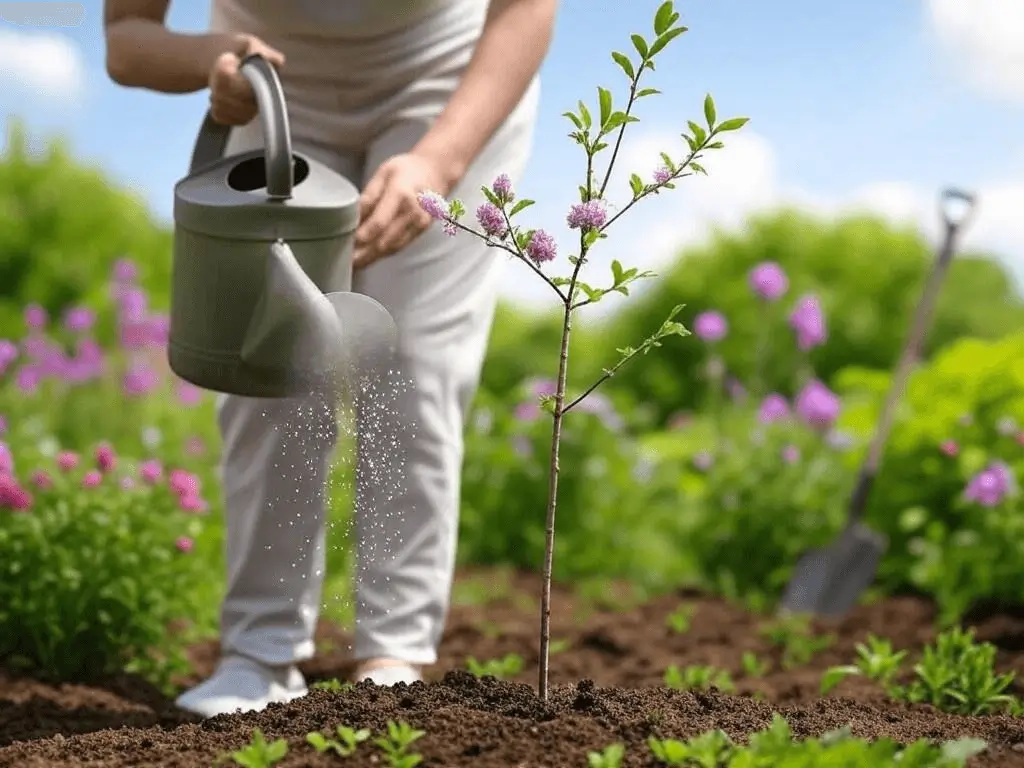
Choosing the Right Location
Selecting the right spot is crucial for your tree’s success. Most purple-blooming trees require full sun to thrive and produce abundant flowers. Make sure the soil is rich in organic matter and drains well. Trees like the eastern redbud are adaptable to various soil conditions, while jacarandas prefer sandy soils.
Planting Tips
- Preparation: Test the soil pH and amend it if necessary to match the tree’s requirements.
- Digging the Hole: Create a hole twice as wide and slightly deeper than the root ball.
- Positioning: Place the tree upright in the hole, ensuring the root crown is at ground level.
- Backfilling: Fill the hole with a mix of soil and compost, tamping down gently to remove air pockets.
- Watering: Thoroughly water the tree after planting to settle the soil.
Watering and Fertilization
Purple-blooming trees have specific watering needs, especially during their establishment period. Water deeply but infrequently to encourage strong root growth. Once established, trees like crape myrtles and jacarandas are relatively drought-tolerant. Use organic fertilizers high in phosphorus to promote vibrant blossoms, applying them in early spring before the blooming season.
Pruning and Maintenance
Pruning is essential for shaping your tree and encouraging prolific blooms. Remove dead or diseased branches annually and thin out overcrowded areas to improve air circulation. For flowering trees, prune after the blooming season to avoid cutting off buds for the next cycle. Regular maintenance ensures a healthy, aesthetically pleasing tree.
Landscaping Ideas with Purple-Blooming Trees
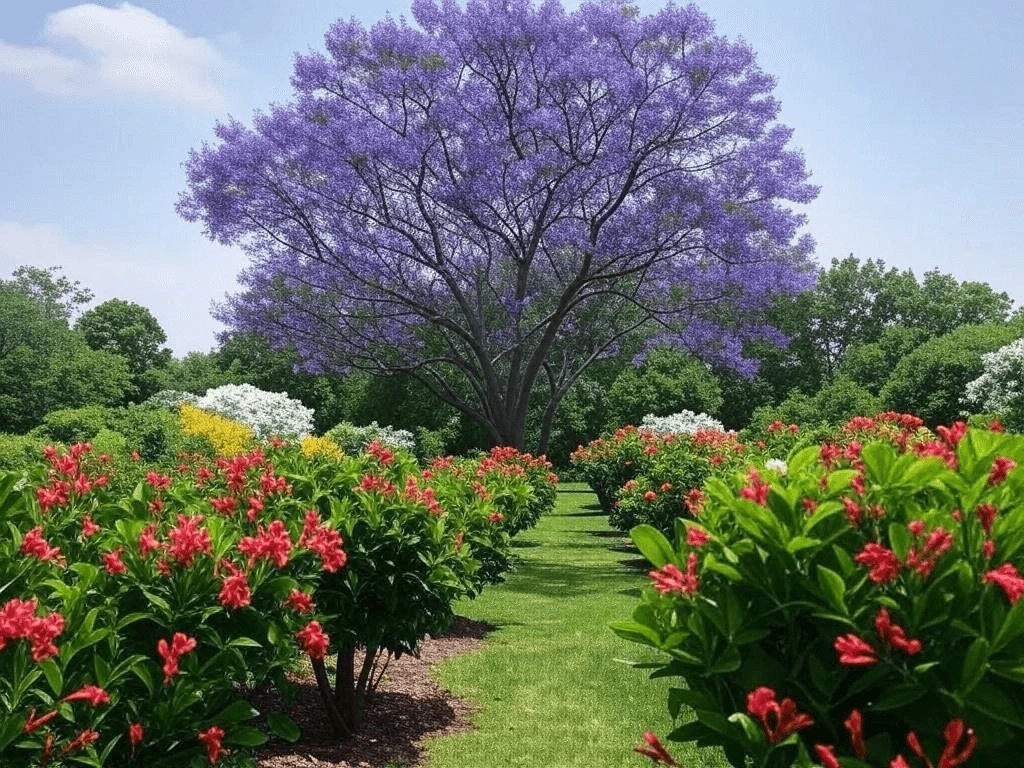
Creating Focal Points
Make a statement by planting jacarandas or crape myrtles as centerpieces in your garden. Their dramatic blooms and canopy structure draw attention and serve as natural conversation starters.
Complementary Plant Pairings
Pair purple-blooming trees with plants that have white or yellow flowers to create a striking contrast. Examples include daisies, sunflowers, or white roses, which enhance the overall vibrancy of the garden.
Pathway and Border Designs
Smaller varieties, such as eastern redbuds, are ideal for lining walkways or borders. Their manageable size and seasonal blooms add structure and color to garden paths, creating an inviting environment.
Seasonal Garden Themes
Design a garden that highlights purple hues across seasons. Incorporate trees that bloom in spring and summer, and complement them with perennials and shrubs that offer fall and winter interest. This approach ensures year-round beauty and continuity.
Common Challenges and How to Overcome Them
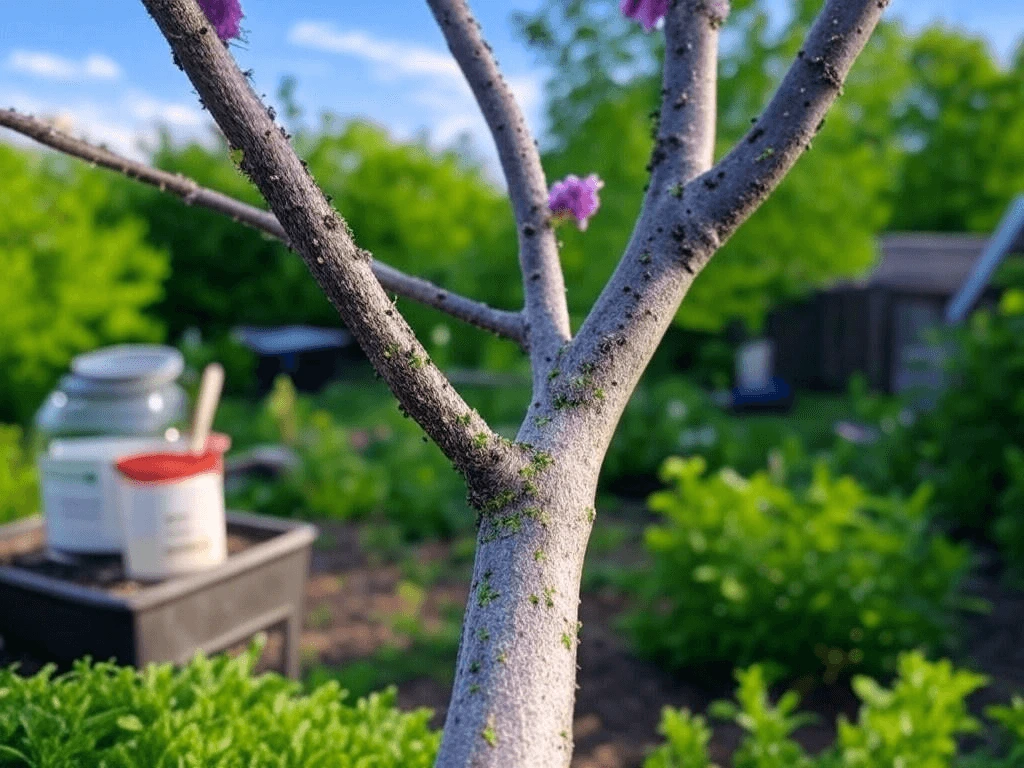
Pests and Diseases
Purple-blooming trees can be susceptible to pests like aphids, scales, and spider mites. Powdery mildew and fungal diseases may also occur in humid climates. Combat these issues with organic insecticides and fungicides. Regularly inspect your trees for early signs of infestation or disease, and act promptly to mitigate damage.
Climatic Constraints
Growing non-native trees in unsuitable climates can pose challenges. For instance, jacarandas struggle in colder zones but can be grown in large containers and moved indoors during winter. Use mulch to protect tree roots from temperature extremes and retain soil moisture.
Soil and Nutrient Problems
Poor soil conditions can hinder growth and flowering. Test your soil annually to identify deficiencies and amend it with organic matter or specific nutrients as needed.
Nutrient deficiencies are often evident through yellowing leaves or slowed growth. Address these issues with balanced fertilizers and proper watering practices
Conclusion
Purple-blooming trees are a stunning addition to any garden, offering beauty, shade, and seasonal interest. Their diverse varieties and manageable care requirements make them accessible to gardeners of all skill levels. By choosing the right tree, following proper planting and maintenance practices, and overcoming common challenges, you can enjoy a vibrant landscape year after year.

